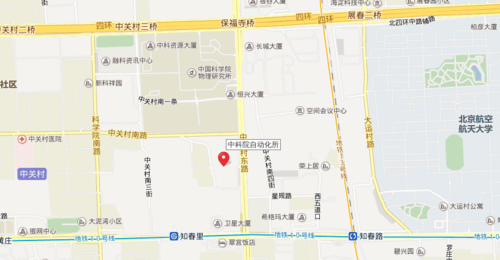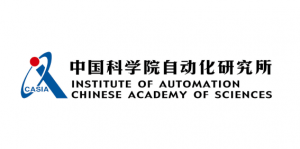计算机视觉前沿研讨会
简介
计算机视觉前沿研讨会是由中国计算机学会主办,计算机视觉专业组承办的计算机视觉领域学术交流研讨会。该研讨会旨在为从事计算机视觉领域的学生、老师和工业界研究人员提供一个学科互动平台,促进领域内的学术交流以及学术界与工业界之间的交流,提高国内视觉领域的研究水平。研讨会将邀请多位知名专家学者做主题报告,分享计算机视觉领域最新最热的理论和方法,使与会者接触到学科最前沿的研究工作和团队。
组委会
| 指导委员会 | 谭铁牛(中科院自动化所) |
| 查红彬(北京大学) | |
| 陈熙霖(中科院计算所) | |
| 艾海舟(清华大学) | |
| 贾云得(北京理工大学) | |
| 组织委员会 | 王 亮(中科院自动化所) |
| 黄 华(北京理工大学) | |
| 林宙辰(北京大学) | |
| 王瑞平(中科院计算所) | |
| 会议赞助 | 王 涛(爱奇艺公司) |
| 操晓春(中科院信工所) | |
| 会议宣传 | 林 倞(中山大学) |
| 耿 新(东南大学) | |
| 会议网站 | 黄永祯(中科院自动化所) |
| 会议注册 | 王 威(中科院自动化所) |
| 会议秘书 | 董 晶(中科院自动化所) |
日程安排
2014年9月13日至14日 SFCV 日程
9月12日(周五、自动化所学术报告厅前) | |||
| 14:00-18:00 | 会议现场注册 | ||
* * *
9月13日(周六、自动化所学术报告厅) | |||
| 08:00-09:00 | 会议现场注册 | ||
时间 | 内容 | 主持人 | 参加人员 |
| 09:00-09:20 | 主任致辞等 | 査红彬 | 所有参会人员 |
| 09:20-10:10 | 报告1:王晓刚教授+罗华平高级架构师 From unified subspace analysis to unified deep learning: ten years journey for face recognition + NVIDIA GPU加速机器学习应用 | 所有参会人员 | |
| 10:10-10:40 | 茶 歇 | ||
| 10:40-11:20 | 报告2:薛建儒教授 Visual Perception for Robotic Cars in Urban Environments | 査红彬 | 所有参会人员 |
| 11:20-12:00 | 报告3:马毅教授 Pursuit of Low-dimensional Structures in High-dimensional Data | 所有参会人员 | |
| 12:00-13:30 | 午餐、休息 | ||
| 13:30-14:10 | 报告4:杨杰教授 计算机视觉的部分新成果介绍 | 陈熙霖 | 所有参会人员 |
| 14:10-14:50 | 报告5:戴琼海教授 Light-Speed Vision | 所有参会人员 | |
| 14:50-15:30 | 报告6:王菡子教授 基于稳健参数模型拟合的医学图像处理及导航 | 所有参会人员 | |
| 15:30-16:00 | 茶 歇 | ||
| 16:00-17:20 | 增选委员、副主任投票环节 | 陈熙霖 | 现任委员+申请委员 |
| 17:20-18:00 | 2014-2015专业组工作会议 | 谭铁牛 | 专业组负责人 |
| 18:30-21:00 | 晚餐 | 专业组委员 | |
* * *
9月14日(周日、自动化所学术报告厅) | |||
时间 | 内容 | 主持人 | 参加人员 |
| 09:00-09:40 | 报告7:张艳宁教授 协同视觉机制研究 无人机视觉发展趋势 | 王亮 | 所有参会人员 |
| 09:40-10:20 | 报告8:林宙辰教授 Block-Diagonality in Subspace Clustering | 所有参会人员 | |
| 10:20-10:40 | 茶 歇 | ||
| 10:40-11:20 | 报告9:黄凯奇研究员 Some thoughts about image object recognition | 王亮 | 所有参会人员 |
| 11:20-12:00 | 报告10:蒋树强研究员 面向复杂背景的物体识别技术 | 所有参会人员 | |
| 12:00-13:30 | 午餐、会议结束 | ||
邀请报告
马 毅
上海科技大学 教授
- 题目
- Pursuit of Low-dimensional Structures in High-dimensional Data
- 摘要
- In this talk, we will discuss a new class of models and techniques that can effectively model and extract rich low-dimensional structures in high-dimensional data such as images and videos, despite nonlinear transformation, gross corruption, or severely compressed measurements. This work leverages recent advancements in convex optimization for recovering low-rank or sparse signals that provide both strong theoretical guarantees and efficient and scalable algorithms for solving such high-dimensional combinatorial problems. These results and tools actually generalize to a large family of low-complexity structures whose associated regularizers are decomposable. We illustrate how these new mathematical models and tools could bring disruptive changes to solutions to many challenging tasks in computer vision, image processing, and pattern recognition. We will also illustrate some emerging applications of these tools to other data types such as web documents, image tags, microarray data, audio/music analysis, and graphical models.This is joint work with John Wright of Columbia, Emmanuel Candes of Stanford, Zhouchen Lin of Peking University, and my students Zhengdong Zhang, Xiao Liang of Tsinghua University, Arvind Ganesh, Zihan Zhou, Kerui Min and Hossein Mobahi of UIUC.
- 报告人简介
- Yi Ma is a Professor of the School of Information and Science and Technology, ShanghaiTech University, China. From 2009 to early 2014, he was a Principal Researcher and the Research Manager of the Visual Computing group at Microsoft Research in Beijing. From 2000 to 2011, he was an Associate Professor at the Electrical & Computer Engineering Department of the University of Illinois at Urbana-Champaign. His main research interest is in computer vision, high-dimensional data analysis, and systems theory. He is the first author of the popular vision textbook “An Invitation to 3-D Vision,” published by Springer in 2003. Yi Ma received his Bachelors’ degree in Automation and Applied Mathematics from Tsinghua University (Beijing, China) in 1995, a Master of Science degree in EECS in 1997, a Master of Arts degree in Mathematics in 2000, and a PhD degree in EECS in 2000, all from the University of California at Berkeley. Yi Ma received the David Marr Best Paper Prize at the International Conference on Computer Vision 1999, the Longuet-Higgins Best Paper Prize at the European Conference on Computer Vision 2004, and the Sang Uk Lee Best Student Paper Award with his students at the Asian Conference on Computer Vision in 2009. He also received the CAREER Award from the National Science Foundation in 2004 and the Young Investigator Award from the Office of Naval Research in 2005. He was an associate editor of IEEE Transactions on Pattern Analysis and Machine Intelligence (PAMI) from 2007 to 2011. He is currently an associate editor of the International Journal of Computer Vision (IJCV), IEEE Transactions on Information Theory, the IMA Journal on Information and Inference, SIAM Journal on Imaging Sciences. He has served as the chief guest editor for special issues for the Proceedings of IEEE and the IEEE Signal Processing Magazine. He has served as Area Chairs for ICCV, CVPR, and NIPS, Program Chair for ICCV 2013, and is the General Chair for ICCV 2015. He is a Fellow of IEEE, and member of ACM and SIAM.
林宙辰
北京大学 教授
- 题目
- Block-Diagonality in Subspace Clustering
- 摘要
- Subspace clustering is to cluster data samples into subspaces. It has found wide applications in computer vision. For subspace clustering to perform robustly when there are severe noise or outliers, the representation matrix, which encodes the coefficients for representing every sample by other samples, should have salient block-diagonal structure. In this talk, I will present theories and models that enforce block-diagonality of the representation matrix.
- 报告人简介
- ZHOUCHEN LIN received the Ph.D. degree in applied mathematics from Peking University in 2000. He is currently a Professor at Key Laboratory of Machine Perception (MOE), School of Electronics Engineering and Computer Science, Peking University. He is also a Chair Professor at Northeast Normal University and a guest professor at Beijing Jiaotong University. He was a guest professor at Shanghai Jiaotong University and Southeast University, and a guest researcher at Institute of Computing Technology, Chinese Academy of Sciences. He is an associate editor of IJCV, an area chair of CVPR2014, and a Senior member of the IEEE.
薛建儒
西安交通大学 教授
- 题目
- Visual Perception for Robotic Cars in Urban Environments
- 摘要
- Human perception is doing things quite different than muchof the current work in computer vision. An autonomous robotic car needs nearly 100% correct perception. In this talk, we concentrate on three areas of visual perception of robotic cars: mapping,localization and navigation, and processing of obstacles around the vehicle (including obstacle detection, tracking, and classification). We will discuss vision algorithms aided by other sensors that have been successful on robotic car, as well as tools (such as datasets and software architectures) for future research. We will address multiple levels of visual perception, from collecting training data, efficiently processing sensor data, and extracting low-level features, to higher-level object and urban environment modeling.
- 报告人简介
- 薛建儒,博士,教授。2003 年获西安交通大学模式识别与智能系统专业工学博士学位。1999 年至今在西安交通大学人工智能与机器人研究所工作。期间 2002 年 10 月至 2003 年 11 月在日本富士施乐公司研究本部工作,2008 年 3 月至 2009 年 4 月在加州大学洛杉矶分校统计系访问研究。主要研究兴趣包括图像/视频内容分析与理解、图像/视频编解码及多传感器融合的环境理解等。合著有 “Statistical Learning and Pattern Analysis Approaches to Image and Video Processing” (365 页,Springer,2009 年)。在 IEEE Trans on Image processing、IEEE Trans on System, Man, and Cybernetics (Part B)、Pattern Recognition 等国际期刊及 ICCV、ECCV、ACM MM、DCC 等国际会议发表论文 70 余篇,授权发明专利 21 项。2006 年入选年度教育部“新世纪优秀人才计划”,2006 年获陕西省青年科技奖,2007 年获国家技术发明二等奖,2008 年获陕西省“青年突击手”称号,2011 年入选西安交通大学“腾飞人才计划”特聘教授。
杨 杰
上海交通大学 教授
- 题目
- 计算机视觉的部分新成果介绍
- 摘要
- 主要介绍报告人负责的实验室近年来发表在PAMI、CVPR、TNNLS、AAAI等国际期刊和会议上关于计算机视觉的部分研究成果介绍,包括:图像去模糊、图像去噪、显著性检测、半监督学习、行为分析。
- 报告人简介
- 德国汉堡大学计算机科学博士,教授,博士生导师,上海交通大学图像处理与模式识别研究所所长,“模式识别与智能系统”国家重点学科负责人,已承担国家和省部级30多项科研项目(国家自然基金项目4项、国家863计划项目3项、973计划子项目2项、中法中日中韩中新国际合作项目6项、上海市重大项目1项、上海市重点项目5项)。7项成果获省部级成果奖,已授权发明专利30多项。入选教育部“跨世纪优秀人才培养计划”、上海市 “曙光优秀学者”“曙光跟踪计划”。担任3个学会的专委会主任、6个期刊编委(其中2个SCI期刊)。在国内外出版专著5部,在国内外学术期刊和会议上发表论文400多篇,其中200多篇被SCI检索。指导的1篇博士论文获全国百篇优秀博士论文,2篇获上海市优秀博士论文,1篇获上海市优秀硕士论文。担任10多个国际会议的大会主席、组委会主席、分会议主席。在国际著名大学或会议做特邀报告超过10次。
张艳宁
西北工业大学 教授
- 题目
- 无人机视觉发展趋势
- 摘要
- 随着传无人机技术的快速发展,无人机视觉研究将重新定义未来人类感知世界的能力与范围。无人机视觉研究不仅在军事中发挥着举足轻重的地位,更已经应用于应急救灾、损失评估、民用监视、能源勘测以及媒体拍摄等国民生活中。正如,九十年代的Personal Computer革命一样,未来的无人机将迎来个人化发展的时代,真正成为未来人类生活助手。无人机平台的微型化、隐身化、高空高速长航时以及高可靠性与高安全性发展将是大势所趋。基于此类平台, 无人机的视觉研究将对与其紧密相关的有效载荷、处理器以及通信等技术提出了新的要求。在无人机导航与控制方面,图像预处理、自动配准、姿态估计以及导航技术已有大量研究,然而在无人机群协同导航定位方面有待提高;在无人机场景成像与探测方面,高分辨率全景视频实时拼接、多源视频离线超分辨重建已较为成熟, 而复杂场景高精度三维重建的时效性有待提高;在无人机目标感知与定位方面,运动目标的检测跟踪已逐步进入工程应用, 但实时环境感知、目标识别与定位仍是当前研究难点;随着无人机在国民生活中的广泛应用,即将面临无人机视觉大数据高速分析与处理的挑战。
- 报告人简介
- 张艳宁,女,工学博士,西北工业大学教授、博士生导师,计算机学院院长,陕西省语音与图像信息处理重点实验室主任。2002获陕西省“三秦巾帼十杰“称号,2004年获全国“三八”红旗手称号,2005年入选教育部“新世纪优秀人才支持计划”,2013年入选科技部“人才推进计划”中青年科技创新领军人,2014年入选中组部“万人计划”科技创新领军人才。主要学术兼职:中国体视学会常务理事、图像分析分会常务副主任兼秘书长、中国图像图形学会理事、中国人工智能学会理事、陕西省信号处理学会常务副理事长。主要研究方向:信息处理、图像处理、模式识别与计算机视觉;主持了包括国家自然科学基金重点项目、国家863计划项目等50余项。主要学术成果:获省部级科技进步二等奖4项,三等奖2项,发表论文200余篇,其中170余篇次被SCI、EI、ISTP等摘引。
戴琼海
清华大学 教授
- 题目
- Light-Speed Vision
- 摘要
- While human vision and traditional computer vision acquire the steady state of the light distribution on subjects based on the longstanding (and in most cases, reasonable) assumption that the speed of light is infinite, transient imaging techniques record the transient process of the optical response to ultra-short time pulsed illumination, which is the vision on the scale of light speed. The acquired transient vision information on the scale of light speed provides a brand new measurement which helps to identify the essential characteristics of subjects or reveal the inherent nature of matter, analyze the reflectance feature of subject surfaces, depict the innate response of matter to the excitation of photons, etc.This talk presents the theories of light speed vision. First the light vision system consisting of a femtosecond laser and an ultra-fast streak camera , the decoupling computational imaging of time-resolved global light transport and the ultra-fast lens-less computational imaging of transient light transport are proposed, and transient images of trillion frames per second are obtained. Then ToF (time-of-flight) based system is built, the theory of frequency domain analysis on transient light transient is proposed, and mobile and large scale transient imaging is demonstrated, which provides the foundation for studies and applications of light speed vision.
- 报告人简介
- Qionghai Dai received the Ph.D. degrees in automation from Northeastern University, Shenyang, China, in 1996. From 1997 to 1999, he was a Postdoctoral Researcher in the Department of Automation, Tsinghua University.Since 1999, he has been with the faculty of Tsinghua University: 1999-2004, as an associate professor; 2005-present, as Professor and the Director of the Broadband Network and Digital Media Laboratory. He now also serves as the associate dean of the Department of Automation. He was awarded the Distinguished Young Scholars of NSF China in 2005.Prof.Dai’s researches focus on the fundamental challenges and key technologies in computational photography, stereo vision and high-dimensional signal processing, include: built a multi-scale dynamic light field system, unveiled the intrinsic mechanisms under joint multi-view and illumination optimized capture, and raised the temporal resolution up to 2 orders of magnitude; proposed an ultra-fast lens-less computational imaging system based on the emerging femto-photography field. He has published more than 100 papers on peer-reviewed journals and conferences, including 42 papers on IEEE Trans. on SP, PAMI, IP, CSVT, STSP, and IJCV etc, Besides, he holds 58 patents of China.
蒋树强
中科院计算所 研究员
- 题目
- 面向复杂背景的物体识别技术
- 摘要
- 自动物体识别是计算机视觉领域的重要研究目标之一,具有广阔的应用前景。由于受到一义多图、一图多物、一物多态、异物相似等多重因素的影响,物体识别技术仍存在许多悬而未决的问题,距实际应用仍有很大差距;特别是在复杂背景下,如何面向具体应用建立图像的高效表示和分类方法、有效去除背景噪音的影响、实现物体的准确识别是一项值得研究的课题。本报告将面向实例级和类别级物体识别,介绍基于局部特征空间关系匹配与局部约束近邻投票的实例级物体识别技术,以及基于点云信息的物体分割与空间金字塔点对特征的手持物体识别技术,报告最后对可能的应用前景进行展望并进行技术演示。
- 报告人简介
- 蒋树强于2005年在中科院计算所博士毕业,现任中科院计算所研究员,IEEE Senior Member,研究方向为图像/视频等多媒体信息的分析、理解与检索技术,共在国内外刊物和会议上发表论文100多篇,其中IEEE Trans on MM/IP/CSVT等SCI国际期刊上发表录用论文20余篇,在计算机学会推荐为A类的学术会议上共发表论文10篇,获授权专利10项,部分技术被应用于多个实际系统中,获得2008年度北京市科技新星计划支持,2012年度中国科学院卢嘉锡青年人才奖,2012年度中国计算机学会科学技术奖(排名第二),2013年度中国科学院青年科学家国际合作奖,获2013年度国家自然科学基金优秀青年科学基金支持。
王菡子
厦门大学 教授
- 题目
- 基于稳健参数模型拟合的医学图像处理及导航
- 摘要
- 颅底手术需要精确地估计以达到安全导航的目的。这对于内镜经鼻颅底外科(ESBS)手术尤其如此,其中医生需要在毫米级的颅底神经血管结构内进行手术。这样的手术在技术上具有较大的挑战性,未能精确地进行医学导航,可能会导致灾难性的后果。如今的导航系统一般只可达到约2毫米的精度。我们基于鲁棒参数模型拟合方法,开发出了一套精确的基于内窥镜的颅骨内鼻腔手术导航系统,并取得了亚毫米级别的精确度,优于当今市场上医学导航系统所取得的精度。在这套系统中,我们提出一个新的鲁棒统计方法(即,自适应尺度与核一致性算法-ASKC),并把它成功地应用在内窥镜图像序列的特征检测与特征匹配、特征跟踪、内窥镜运动估计、三维重构等上;进而,我们把所估计的三维结构配准到人体颅骨预扫描的CT数据上,从而精确跟踪内窥镜在颅内的位置并估计内窥镜的姿态,进行手术导航。
- 报告人简介
- 王菡子,福建省“闽江学者”,厦门大学特聘教授,博士生导师,厦门大学信息科学与技术学院教授委员会主任,厦门大学模式分析与机器智能研究中心主任。 2004年获澳大利亚MONASH大学博士学位,并荣获Douglas Lampard最佳博士论文奖。之后,分别在澳大利亚MONASH大学、美国JOHNS HOPKINS大学、澳大利亚Adelaide大学任职。2010年入选福建省“闽江学者”特聘教授;2011 年获得厦门市杰出青年科技人才创新计划项目资助;2012年被厦门市确认为厦门市重点引进人才;2013年入选福建省“百人计划”。主要研究方向为计算机视觉和模式识别。在国内外重要学术期刊和国际学术会议上已发表论文80多篇,其中,多篇发表在国际期刊IEEE TPAMI、IJCV和国际期刊IEEE TIP、IEEE TMI、IEEE TCSVT、PR等上,以及国际会议ICCV、ECCV、CVPR、NIPS、MICCAI等上。现为IEEE高级会员,担任国际期刊 IEEE TCSVT编委,并担任ACM国际会议ICIMCS2014的大会主席、国际会议 CVRS2012程序委员会主席以及国际会议ICCV、CVPR等的程序委员会委员。
王晓刚
香港中文大学 助理教授
- 题目
- From unified subspace analysis to unified deep learning: ten years journey for face recognition
- 摘要
- Representing the Nvidia CUDA Research Center at the Chinese University of Hong Kong, I will report our most recent work on deep learning for face recognition. With a novel deep model and a moderate training set with 200,000 face images, 99.15% accuracy has been achieved on LFW, the most challenging and extensively studied face recognition dataset. This is the first time that a machine provided with only the face region achieves an accuracy on par with the 99.20% accuracy of human to whom the entire LFW face image including the face region and large background area are presented to verify. Compared with the best deep learning result (97.45%), the error rate has been significantly reduced by 67%. Our deep model was trained on multiple NVIDIA K40 GPUs, which is 30 times faster than 30 cluster system.Reducing intra-personal variations while enlarging inter-personal differences is an eternal topic in face recognition. Unified subspace analysis published ten years ago shows how different subspace methods approximate the two types of variations with linear projections in sequential steps. However, these models are much limited by their linear nature or shallow structures, while inter- and intra-personal variations are complex, highly nonlinear, and observed in high-dimensional image space. We show that deep learning provides much more powerful tools to handle the two types of variations. Thanks to its deep architecture and large learning capacity, effective features for face recognition can be learned through hierarchical nonlinear mappings. It is essential to learn such features by using two supervisory signals simultaneously, i.e. the face identification and verification signals. Deep features learned with the identification signal have rich identity-related or inter-personal variations, while the verification signal is effective on reducing intra-personal variations. Both supervisory signals emphasize different aspects in feature learning and therefore should be employed together.
- 报告人简介
- Xiaogang Wang received his Bachelor degree in Electrical Engineering and Information Science from the Special Class of Gifted Young at the University of Science and Technology of China in 2001, M. Phil. degree in Information Engineering from the Chinese University of Hong Kong in 2004, and PhD degree in Computer Science from Massachusetts Institute of Technology in 2009. He is an assistant professor in the Department of Electronic Engineering at the Chinese University of Hong Kong since August 2009. He received the Outstanding Young Researcher in Automatic Human Behaviour Analysis Award in 2011, Hong Kong RGC Early Career Award in 2012, and Young Researcher Award of the Chinese University of Hong Kong. He is the associate editor of the Image and Visual Computing Journal. He was the area chair of ICCV 2011, ECCV 2014 and ACCV 2014. His research interests include computer vision, deep learning, crowd video surveillance, object detection, and face recognition.
黄凯奇
中科院自动化所 研究员
- 题目
- Some thoughts about image object recognition
- 摘要
- 图像物体识别是计算机视觉的中心问题之一,结合相关研究工作谈谈对图像物体识别研究的一些理解和认识。
- 报告人简介
- 研究员,博士生导师,美国电气电子工程师学会(Institute of Electrical and Electronic Engineers)高级会员,计算机学会高级会员,IEEE北京分会副秘书长(2006-2008),IEEE SMC认知计算委员会委员。国家自然科学优秀青年基金获得者,北京市科技新星。先后获南京理工大学学士和硕士,东南大学通信与信息处理博士学位。主要研究方向为计算机视觉、模式识别、人的视觉认知特性的研究,作为课题负责人承担和完成国家自然科学基金、国家863计划、973、中科院知识创新工程重点以及企业合作课题三十余项。迄今已在国际/国内期刊、国际会议上发表/录用学术论文100余篇。作为主要负责人带领团队获得2010和2011年国际视觉竞赛PASCAL VOC目标检测任务冠军。在包括ICCV、CVPR在内的计算机视觉和模式识别十几个国际主流会议会上担任主席和程序委员,是ICCV2011-Visual Surveillance Workshop的Co-chair和第三届全国视觉监控学术会议的程序委员主席。在智能视觉监控及行为理解方面的研究获得第十二届中国发明专利优秀奖和国家技术进步二等奖。
报告下载
- 林宙辰:Block-Diagonality in Subspace Clustering
- 薛建儒:Visual Perception for Robotic Car in Urban Environment
- 杨 杰:计算机视觉的新成果介绍
- 王晓刚:From Unified Subspace Analysis to Joint Deep Learning for Face Recognition
会场
北京市 海淀区 中关村东路95号
中国科学院 自动化研究所 智能化大厦 3层学术报告厅
交通
从北京国际机场前往会场:
- 机场巴士 5 号线到中关村4号桥,搭乘的士或步行 1 公里到达。
- 搭乘机场快轨到达三元桥站,换乘地铁 10 号线到知春里站下车,搭乘的士或步行 1 公里到达。
从北京站前往会场:
- 搭乘地铁2号线,在西直门站下车,转乘地铁13号线,到知春路站下车。
从北京南站前往会场:
- 搭乘地铁4号线,在海淀黄庄站下车,转乘地铁10号线,到知春里站下车。
从北京西站前往会场:
- 搭乘特19路在海淀交通支队站下车。
住宿
附近宾馆
注册
注册已经截止,感谢您的关注,若有任何问题,请联系 ccffcv2014@gmail.com 。
本次研讨会免收注册费,与会者住宿交通费用自理。研讨会设有晚宴,仅限专业组委员出席。因场地有限,若注册人数超限,超出的非专业组委员的注册申请将交由委员会审核。
赞助
本研讨会由以下公司、机构赞助:
爱奇艺
联系方式
若有任何问题,请联系 ccffcv2014@gmail.com
推荐内容
More >>>- · 第八十三期CCF-CV走进高校系列报告会于悉尼大学圆满结束
- · 第八十四期CCF-CV走进高校系列报告会于广东石油化工学院圆满结束
- · 第七十三期CCF-CV走进高校系列报告会于苏州科技大学圆满结束
- · 第七十四期CCF-CV走进高校系列报告会于河北大学圆满结束
- · 第七十期CCF-CV走进高校系列报告会于太原理工大学圆满结束
- · 第六十八期CCF-CV走进高校系列报告会于北京信息科技大学圆满结束
- · 第三届计算机视觉及应用创新论坛在广州举办
- · 第一届中国模式识别与计算机视觉大会在广州召开
- · CCF-CV专委会2018年度全体委员会议在广州成功举办
- · 【预告】CCF-CV走进高校系列报告会(第五十八期,广西师范学院)






